INTRODUCTION When planning projects, I have always been drawn to fairly intricate designs, and over the years, I have experimented with a number of techniques to achieve the results I want. Foundation paper piecing is hands down my favorite way of getting a grip on those little pieces and making sure my points stay pointy!Foundation piecing can seem quite daunting, especially some of the more complex pictorial blocks. Such blocks can be made up of numerous pieces, which are difficult to keep track of. To ease you into paper piecing, I have provided an introduction on how to paper piece.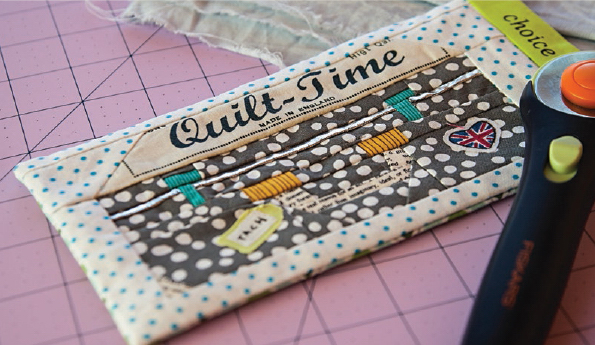
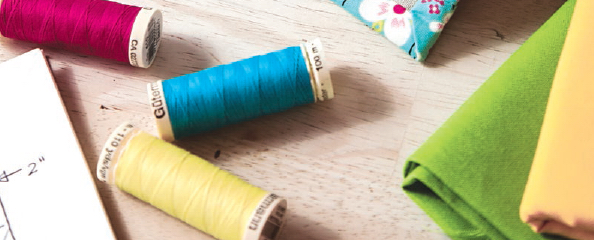 FOUNDATION PIECING Foundation piecing involves using a paper or fabric foundation as a sewing guide and stabilizer to create a precisely pieced design. The term foundation piecing actually includes a variety of techniques that vary depending on the block design or the quilters preference. The designs in this book use two techniques, with most requiring only the first: Basic foundation piecing Freezer-paper foundation piecing Each method has its advantages and disadvantages, and you can experiment to find what works best.
FOUNDATION PIECING Foundation piecing involves using a paper or fabric foundation as a sewing guide and stabilizer to create a precisely pieced design. The term foundation piecing actually includes a variety of techniques that vary depending on the block design or the quilters preference. The designs in this book use two techniques, with most requiring only the first: Basic foundation piecing Freezer-paper foundation piecing Each method has its advantages and disadvantages, and you can experiment to find what works best.
You need not limit yourself to only one approach.  TRANSFER THE DESIGN Regardless of the foundation-piecing method, youll need to transfer the pattern onto your chosen foundation material. TIPS In basic foundation piecing, the finished block will be the mirror image of the original design. With symmetric designs such as snowflakes, this is not important. And for some asymmetric designs, such as fruits or trees, the design might work either way, depending on your block.
TRANSFER THE DESIGN Regardless of the foundation-piecing method, youll need to transfer the pattern onto your chosen foundation material. TIPS In basic foundation piecing, the finished block will be the mirror image of the original design. With symmetric designs such as snowflakes, this is not important. And for some asymmetric designs, such as fruits or trees, the design might work either way, depending on your block. 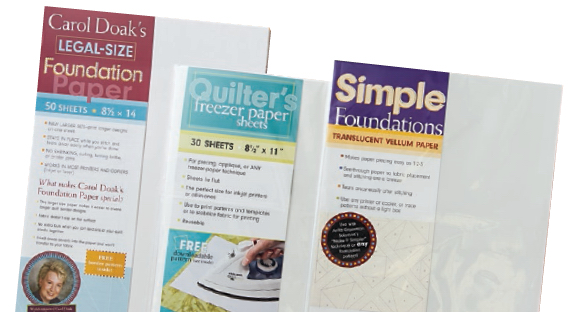 When printing a design onto foundation paper, if Page Scaling is available in the Print Options, be sure to set it to 100% or None to ensure that the pattern is printed without distortion.
When printing a design onto foundation paper, if Page Scaling is available in the Print Options, be sure to set it to 100% or None to ensure that the pattern is printed without distortion. 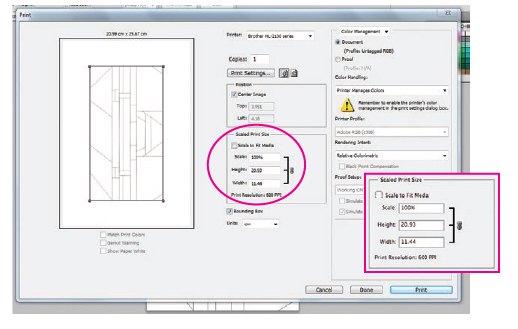 If youre not printing from a computer directly onto the foundation material, you can trace from photocopies onto the foundation using a lightbox or by holding the foundation and design up to a window.
If youre not printing from a computer directly onto the foundation material, you can trace from photocopies onto the foundation using a lightbox or by holding the foundation and design up to a window.  If youre not printing from a computer directly onto the foundation material, you can trace from photocopies onto the foundation using a lightbox or by holding the foundation and design up to a window.
If youre not printing from a computer directly onto the foundation material, you can trace from photocopies onto the foundation using a lightbox or by holding the foundation and design up to a window.
Before tracing, tape both layers in place to prevent either from shifting. TIP If youre using freezer paper, trace designs onto the matte side. Trim the foundation, leaving around the edge of the design. It is much easier to sew the design without excess foundation getting in the way. FOUNDATION-PIECING METHODS BASIC FOUNDATION PAPER PIECING In basic foundation piecing, you place the first piece of fabric wrong side against the unprinted side of the foundation, then position the second piece and line up the seams. Sew exactly on the line on the printed side of the foundation through the paper and the fabric layers.
As you machine sew to add each piece of the design, make sure the right side of the design faces down. FOUNDATIONS Foundations can be either temporary or permanent. Temporary foundations, such as vellum, printing paper, and freezer paper, are torn away after the design has been stitched together. Permanent foundations, such as interfacing, muslin, or other lightweight cotton fabrics, remain in place in the finished project. The type of foundation you use may depend on your finished project. Temporary foundations are great for avoiding bulkfor instance, when making quilts.
Permanent foundations may be more useful when making very small pieces or when you want the finished design to be a little stifferfor instance, when making bags. PREPARATION Make three copies of the design: one on the foundation of your choice and two on printer paper. One of the printer paper copies will be used as a cutting guide, and the other will be a master reference for piecing the design. One oft-heard grumble about foundation piecing is fabric wastage. It is difficult to estimate the size of a fabric scrap for an awkwardly shaped piece of the design. Make an additional copy of the design to use as a cutting guide to take the guesswork out of cutting fabric scraps.
For each piece in the design, cut out the corresponding piece from the cutting guide and lay it right side up on the wrong side of the fabric. Cut out the fabric, leaving about seam allowance all the way around. This seam allowance allows a little wiggle room for piecing, while also preventing fabric wastage. 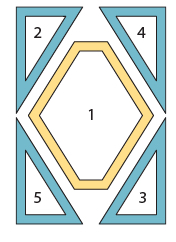 Paper-piecing foundations are usually numbered to show piecing order. The order is determined by the blocks geometry, and there may be more than one possible ordering. In general, interior pieces are sewn first and larger pieces are added around them to build a design.
Paper-piecing foundations are usually numbered to show piecing order. The order is determined by the blocks geometry, and there may be more than one possible ordering. In general, interior pieces are sewn first and larger pieces are added around them to build a design.
Some designs cannot be sewn using a single foundation because of their geometry. These designs are divided into sections that are paper pieced separately and then sewn together using conventional piecing. In this book, all foundation pieces are labeled with a letter for the section and a number indicating piecing order within that section. Designs requiring only one section will have only numbers. Some designs can be divided into sections in more than one way. 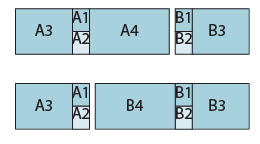 TIP For a more in-depth look at how to divide block designs into different segments for piecing, refer to Every Quilters Foundation Piecing Reference Tool by Jane Hall and Dixie Haywood (from C&T Publishing).
TIP For a more in-depth look at how to divide block designs into different segments for piecing, refer to Every Quilters Foundation Piecing Reference Tool by Jane Hall and Dixie Haywood (from C&T Publishing).  TIP For a more in-depth look at how to divide block designs into different segments for piecing, refer to Every Quilters Foundation Piecing Reference Tool by Jane Hall and Dixie Haywood (from C&T Publishing).
TIP For a more in-depth look at how to divide block designs into different segments for piecing, refer to Every Quilters Foundation Piecing Reference Tool by Jane Hall and Dixie Haywood (from C&T Publishing).
SEWING THE DESIGN If the foundation has more than one section, cut along the section lines. Shorten the stitch length on your machine. A shorter stitch length (12 to 16 stitches per inch, or 2mm) strengthens the seams. Also, because each stitch perforates the foundation, a shorter stitch makes removal of temporary foundations that much easier. TIP Sewing through paper dulls needles quickly. Start each project with a new needle.
Use the cutting guide to cut a fabric scrap larger than the first piece in the design. Place the scrap on the back of the foundation, wrong sides facing, with at least seam allowance all the way around. Hold the work up to a light source to check that the fabric completely covers the area. Pin the fabric in place or use a glue stick if the first piece is so small that a pin would be in the way. 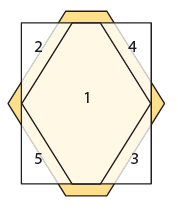
Next page
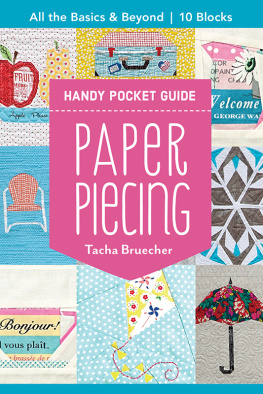

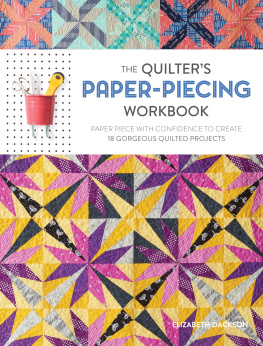
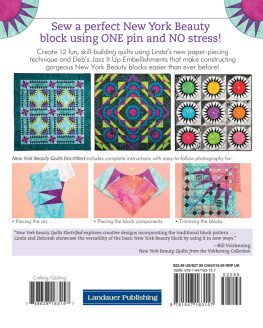
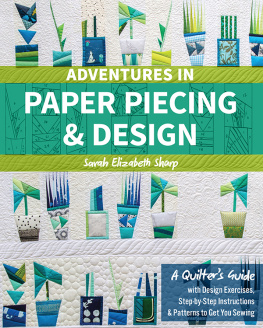
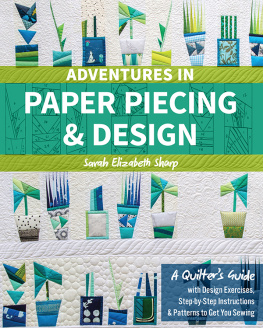
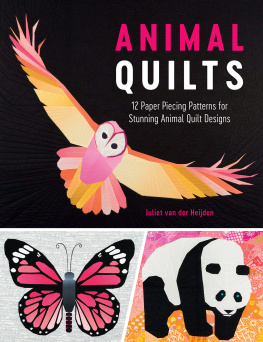
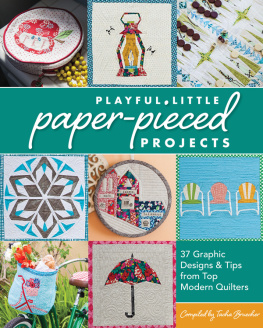
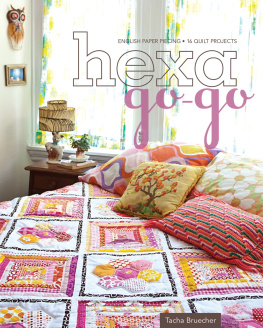
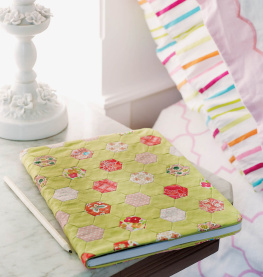
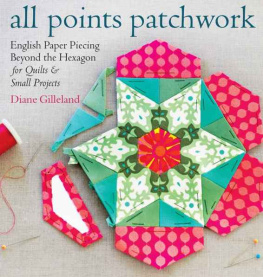

 FOUNDATION PIECING Foundation piecing involves using a paper or fabric foundation as a sewing guide and stabilizer to create a precisely pieced design. The term foundation piecing actually includes a variety of techniques that vary depending on the block design or the quilters preference. The designs in this book use two techniques, with most requiring only the first: Basic foundation piecing Freezer-paper foundation piecing Each method has its advantages and disadvantages, and you can experiment to find what works best.
FOUNDATION PIECING Foundation piecing involves using a paper or fabric foundation as a sewing guide and stabilizer to create a precisely pieced design. The term foundation piecing actually includes a variety of techniques that vary depending on the block design or the quilters preference. The designs in this book use two techniques, with most requiring only the first: Basic foundation piecing Freezer-paper foundation piecing Each method has its advantages and disadvantages, and you can experiment to find what works best. TRANSFER THE DESIGN Regardless of the foundation-piecing method, youll need to transfer the pattern onto your chosen foundation material. TIPS In basic foundation piecing, the finished block will be the mirror image of the original design. With symmetric designs such as snowflakes, this is not important. And for some asymmetric designs, such as fruits or trees, the design might work either way, depending on your block.
TRANSFER THE DESIGN Regardless of the foundation-piecing method, youll need to transfer the pattern onto your chosen foundation material. TIPS In basic foundation piecing, the finished block will be the mirror image of the original design. With symmetric designs such as snowflakes, this is not important. And for some asymmetric designs, such as fruits or trees, the design might work either way, depending on your block.  When printing a design onto foundation paper, if Page Scaling is available in the Print Options, be sure to set it to 100% or None to ensure that the pattern is printed without distortion.
When printing a design onto foundation paper, if Page Scaling is available in the Print Options, be sure to set it to 100% or None to ensure that the pattern is printed without distortion.  If youre not printing from a computer directly onto the foundation material, you can trace from photocopies onto the foundation using a lightbox or by holding the foundation and design up to a window.
If youre not printing from a computer directly onto the foundation material, you can trace from photocopies onto the foundation using a lightbox or by holding the foundation and design up to a window.  Paper-piecing foundations are usually numbered to show piecing order. The order is determined by the blocks geometry, and there may be more than one possible ordering. In general, interior pieces are sewn first and larger pieces are added around them to build a design.
Paper-piecing foundations are usually numbered to show piecing order. The order is determined by the blocks geometry, and there may be more than one possible ordering. In general, interior pieces are sewn first and larger pieces are added around them to build a design. TIP For a more in-depth look at how to divide block designs into different segments for piecing, refer to Every Quilters Foundation Piecing Reference Tool by Jane Hall and Dixie Haywood (from C&T Publishing).
TIP For a more in-depth look at how to divide block designs into different segments for piecing, refer to Every Quilters Foundation Piecing Reference Tool by Jane Hall and Dixie Haywood (from C&T Publishing). 